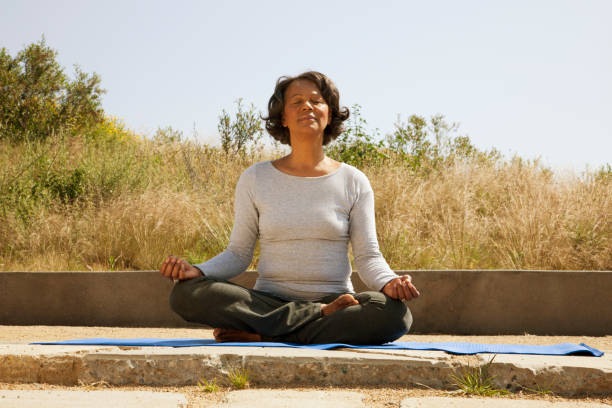
If you've been feeling like you don't know whether to laugh or cry because you're unable to find the right solution for managing menopausal or perimenopausal symptoms, then this is for you. Someday every woman will experience menopause and when that day comes, you'll want to be prepared.
Menopause marks the period in a woman's life when she's transitioning from child-bearing years and her period has been absent for 12 consecutive months. In essence, she is going into mid-life while handling other major changes from marriage to divorce and empty-nesting.
The arrival of menopause isn't always grand nor is it linear. Many factors determine when a woman will enter this phase in her life from family genetics to lifestyle as well as how you manage stress.
Studies show Black women begin experiencing menopausal symptoms around age 49, about two years earlier than the median age in the U.S. which is 51 years.
Depression During Menopause: How to Spot It and Treat It
Some women start experiencing vasomotor symptoms such as hot flashes or night sweats in their mid-30s which is perimenopause. The intensity, length and frequency can vary. The Study of Women’s Health Across the Nation (SWAN) found Black women to have the highest prevalence, the longest duration and experience more discomfort during perimenopause and the menopausal phase than Hispanic or White women. For instance, SWAN also reports Black women experience hot flashes for 10 years, Latinas 8.9 years and White women around 6.5 years.
While research and statistics state Black women are on the shorter end of the stick when it comes to the severity of menopausal symptoms; meditation and mindfulness can help manage the symptoms and help to make the best of this natural transition.
How does meditation help menopause symptoms?
Mindfulness is the practice of slowing down to pay attention to the Self. The most popular pathway to this is through meditation and the benefits are endless. Allowing yourself to reconnect, re-center and recharge is essential to stress management and for rest and relaxation.
For Black women, active meditation becomes a game-changer since they are facing compounded disparities in their world from
healthcare, health outcomes, disparities, racism and other traumas. Meditation is crucial to empowering Black women to better handle life's challenges.
Which techniques work best for managing menopause symptoms?
Thanks to COVID-19, the world came to a screeching halt and the practice of meditation became popular.
Several forms of non-religious meditation exist that allow novices to try solo sessions or join instruction-led sessions.
And there are many websites, podcasts and Black-women-specific spaces that offer meditative experiences.
RELATED: 9 Steps To Great Health After Menopause
Depending on your level of comfort or knowledge, these five meditation techniques can be implemented to manage symptoms of menopause:
- Mindfulness meditation - is effective and easy to add to your morning routine. You take a seated position on a cushion or yoga mat and practice deep breathing while also paying attention to thoughts, feelings and emotions that arise practicing acceptance and non-judgment. Ten to Fifteen minutes a day can help you feel lighter.
- Breath-work - is simple and the most relaxing. While practicing this meditation, one focuses on their breathing and counting their breaths. Three to five minutes is all that's required to give you the relief you need.
- Yoga - this is a form of meditation that combines movement with deep breathing exercises and can include some mantras. It's one of the most widely used methods of meditation in the modern world. You can engage in a 15 - 30-minute solo practice if you're familiar with the language and techniques or you can find classes online or in your city that offers certified instructor-led sessions for beginners and experienced practitioners.
- Transcendental meditation - for those who love mantras and affirmations, this form of meditation is heavily based on these techniques. In a seated position, the practitioner focuses on spiritual or life goals to repeat for at least three minutes each session. For example, "I am producing healthy and abundant outcomes in every area of my life." You can be as creative as you want.
- Chakra meditation - this form of meditation is for those who are more experienced and practice clearing energy within their bodies. In this method, the practitioner focuses on a single chakra or "energy zone" within the body and gives it a specific mantra. There are seven chakra centers in the body starting from the top to the bottom: crown (head), third-eye, throat, heart, solar plexus, sacral and the root chakras.
Other types of meditations are also available.
If you're looking for shared experiences and advice, check out Black Girls Guide to Surviving Menopause podcast. Or you can find an online community like Black Zen, a BIPOC-centered space dedicated to improving the health and well-being of black and brown communities.









